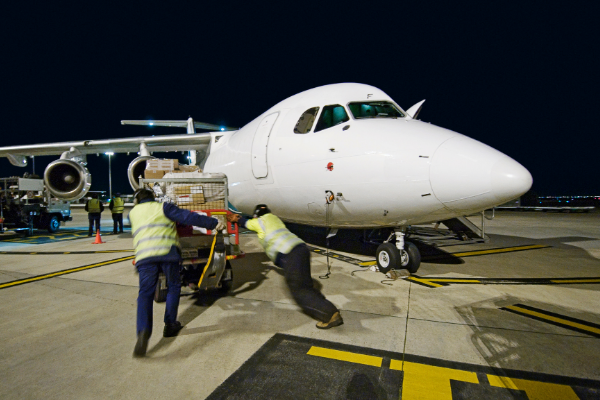Changing Shipment Dynamics in the Logistics Industry
As the logistics industry continues to evolve, forwarders are facing two major trends that are significantly impacting their operations. The first trend is the shift of cargo from air to ocean, while the second is the decrease in shipment sizes. These trends create both challenges and opportunities for forwarders in a market that is experiencing stagnant overall volume growth.

The Growing Challenge of Decreasing Shipment Sizes
Forwarders are feeling the pressure of decreasing shipment sizes, which has forced them to handle a higher volume of quote requests. With smaller shipments becoming the norm, forwarders are required to process more requests to maintain their business volume. This increased workload puts a strain on their resources, leading to additional costs. To remain competitive in this changing landscape, forwarders must find ways to reduce their cost per file and optimize their operations.
Meeting Higher Expectations: Cargo Tracking for Lower-Margin Shipments
Adding to the challenges of decreasing shipment sizes, forwarders now face higher expectations from shippers. Even for lower-margin shipments, shippers demand cargo tracking and visibility throughout the transportation process. Meeting these expectations is crucial for forwarders to retain their customers and gain a competitive edge. However, implementing cargo tracking systems for every shipment can be costly, especially when profit margins are slim.
The Impact of E-commerce: Significant Decline in Air Freight Sizes
Industry experts have confirmed the significant decline in air freight sizes, which directly correlates with the growth of e-commerce and changes in cargo handling methods. With more consumers making online purchases, the nature of shipments has changed.
Smaller, individual packages are being shipped instead of bulkier orders. Shipments weighing more than 1,000 kilos have decreased by 5% since 2019, while shipments exceeding 5,000 kilos have experienced an 18% decline. This shift in shipment size presents a new challenge for forwarders as they adapt to handling a high volume of smaller packages.

Embracing Technology: An Essential Strategy for Forwarders
To navigate the challenges posed by decreasing shipment sizes and growing customer expectations, forwarders must embrace technology as an essential part of their strategy. With the digitization of processes, forwarders can streamline operations, reduce costs, and enhance customer satisfaction.
By leveraging technology solutions such as automated quote management systems, real-time tracking platforms, and data analytics tools, forwarders can overcome the hurdles presented by smaller shipments and meet the demands of their customers. 7ConNetwork offers these technologies to freight network members to give them the competitive edge they need at the lowest cost possible.
The Long-Term Shift: From Air to Ocean Freight
In addition to the decreasing shipment sizes, forwarders also face the long-term trend of cargo transitioning from air to ocean. This shift is driven by the need to reduce freight costs and minimize carbon emissions. While there was a temporary surge in air freight demand during the pandemic, the industry is now witnessing a gradual transition to ocean freight. Air freight volume has decreased globally, while ocean freight has experienced a modest increase. Forwarders must adapt their business models to accommodate this shift and find ways to optimize their operations in the ocean freight sector.

The emergence of a third frontier, supply chain diversification, adds another layer of complexity for forwarders. Significant increases in air and ocean volumes between China and Mexico indicate a changing landscape where global supply chains are becoming more interconnected. Forwarders must consider the diversification of supply chains as businesses prioritize reshoring based on factors like labor costs and geopolitical considerations.
Industry experts stress the importance of digitization in response to compressed margins, rising labor costs, and the challenge of finding skilled labor. Despite the smaller shipment sizes and increased volume, the adoption of technology in the logistics industry has been limited. To stay competitive in this evolving market, forwarders need to embrace technological advancements. By leveraging digital tools and solutions, forwarders can optimize their operations, mitigate margin pressures caused by smaller shipments and the shift from air to ocean, and take advantage of the opportunities presented by the changing global supply chains.
Stay Ahead of the Curve with 7ConNetwork
The logistics industry is undergoing significant changes with the shift from air to ocean freight and the decrease in shipment sizes. Forwarders face both challenges and opportunities in this changing landscape. By joining a freight forwarder network that leverages technology, embracing digitization, and adapting their strategies, forwarders can navigate through these evolving dynamics and thrive in the logistics industry of tomorrow. Learn more about how 7ConNetwork can help you thrive here.